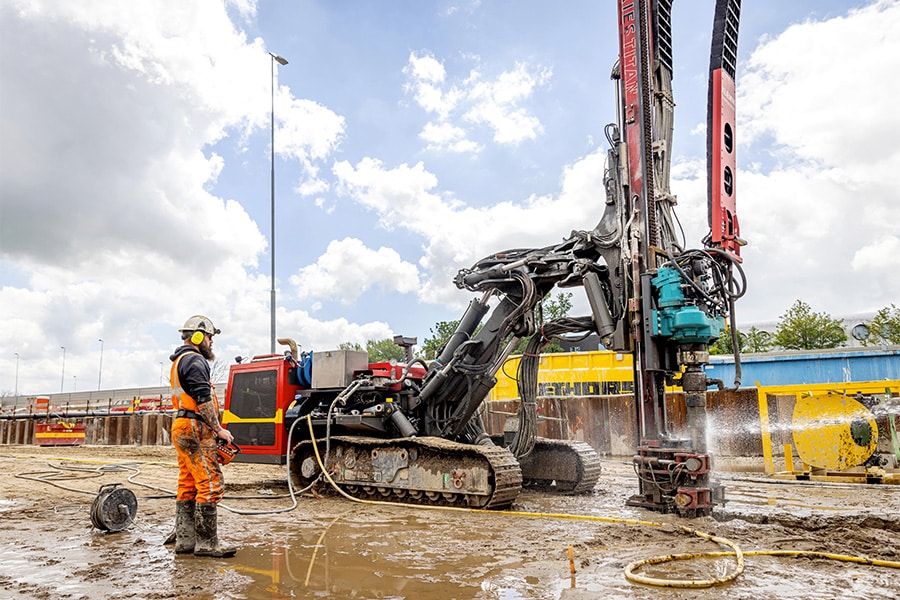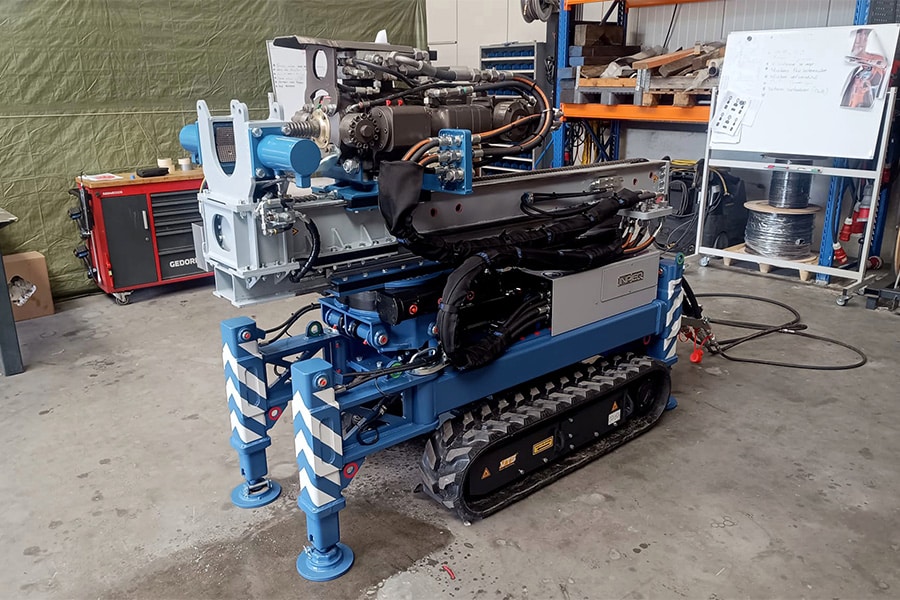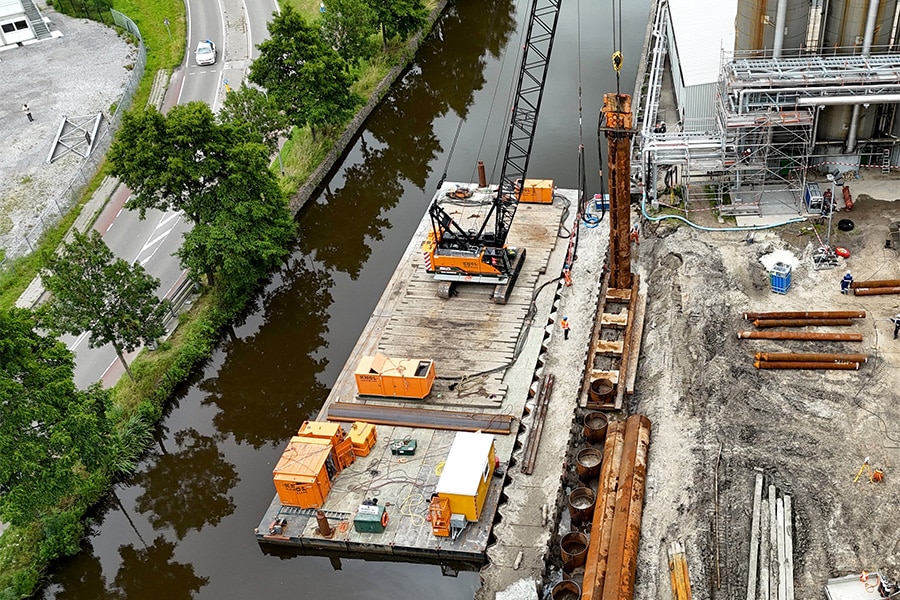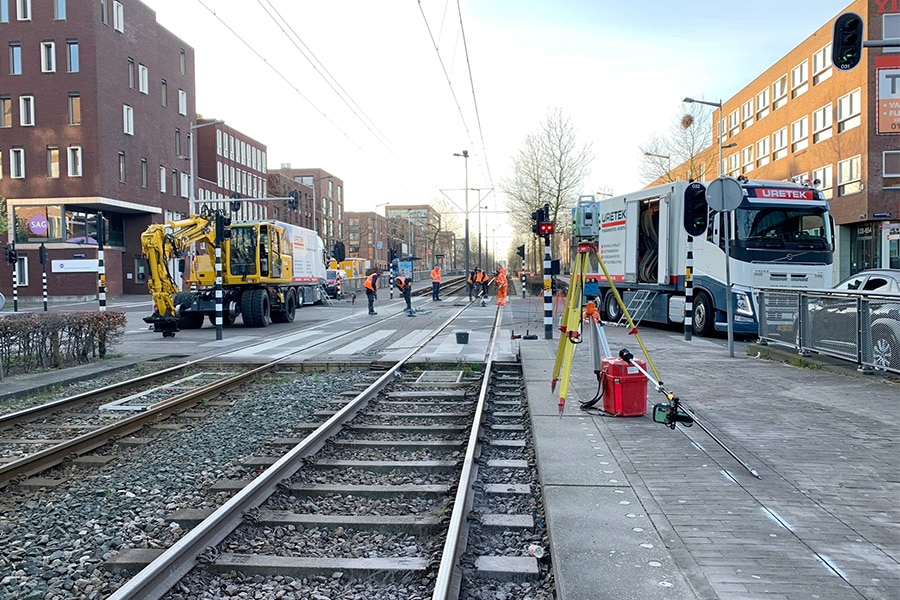
Foundation repair with expansion resin
URETEK is a somewhat odd duck in the world of foundation engineering. They inject a highly expanding material into the subsoil with which they can elevator an architectural structure with extreme precision. URETEK has been the founder of this technique in the Netherlands since 1992 and is rightfully the expert in this field. This proven effective method is also widely used in the infrastructure sector for lifting, among other things, baffle plates under artworks or leveling concrete slabs at bus lanes and railroad crossings. But the expansion resin offers many more possibilities....
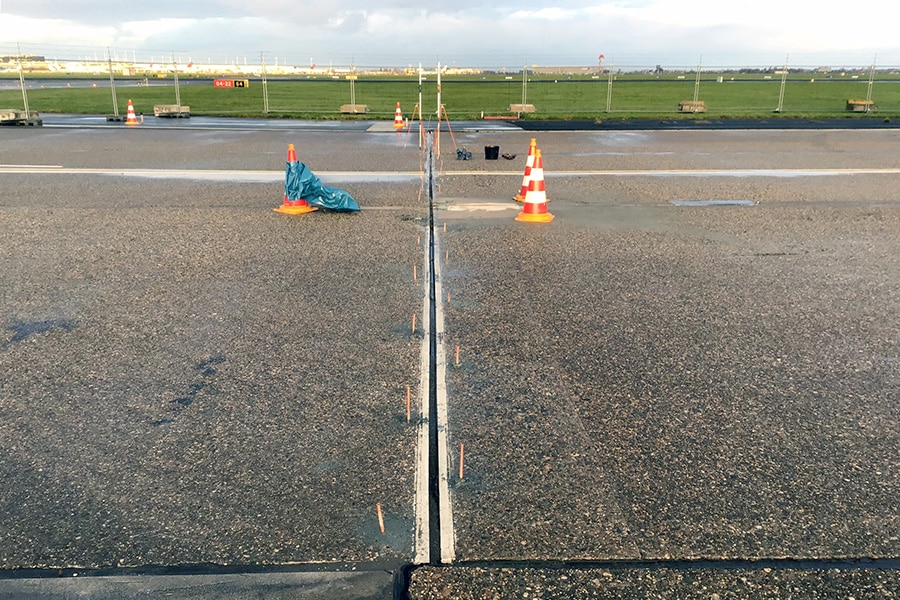
URETEK is a global organization. "The method originated in Finland, but we have further developed the injection technique over the years and tailored it to the local substrate," says Robbert Melis, manager of sales/technical advisor at URETEK Benelux. "The basis is a 2-component injection resin with a decent coefficient of expansion. This allows us to tension the subgrade and compact the soil package. We keep injecting until the subsoil is strong enough to stop any settlements or until an architectural object is lifted to the desired level. And that can be done millimeter-accurately in subsoils of sand, loam or clay."
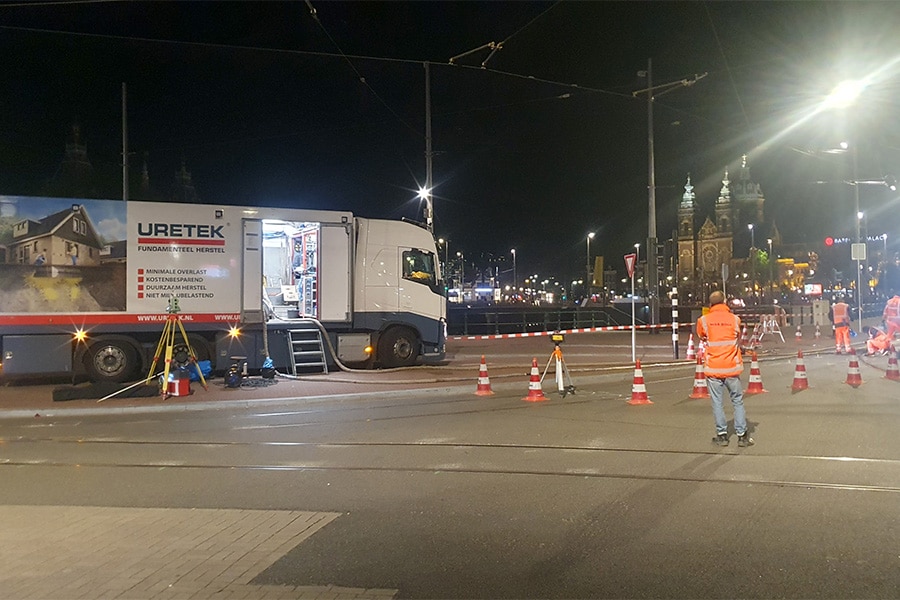
Wide application range
While we are definitely a niche player within the foundation world, the injection technique has a very wide range of applications, says Robbert. "We do an average of about 350 projects a year, ranging from lifting a subsiding house floor to underfilling floor fields at Schiphol Airport over which airplanes drive. Rijkswaterstaat and ProRail also know where to find us as soon as there are problems with subsiding baffle plates at engineering structures or railroad crossings that are crooked. We recently underfilled and lifted the rubbing plates at the flyover at the De Hogt junction. Here there was washout due to a leakage in a sewer line. We were called in the morning and in the afternoon we were already there and filling the huge hollow space under the riser plates with our expansion resin. That's how fast things can go. A similar problem with leaching occurred recently on the A2 near Boxtel, which meant that one lane even had to be closed. We then put the soil package under tension, after which the lane could immediately be used again. That too is the advantage of our technology."
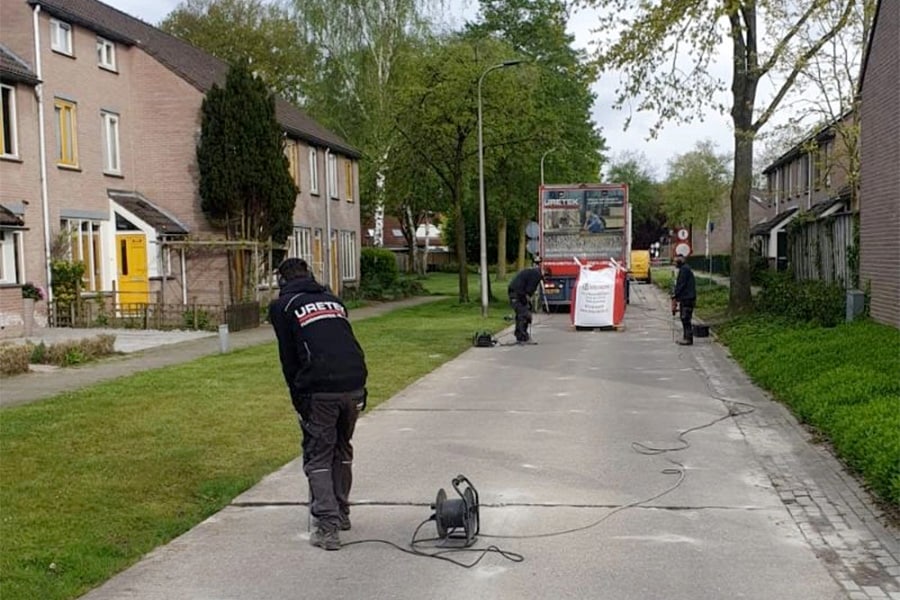
Removing nuisances
For that reason, URETEK is also often the go-to person for lifting concrete or harmony slabs at railroad crossings. "It's almost a day job," says Robbert. "Recently we lifted the rail carrier plates of the streetcar track in front of the Central Station in Amsterdam and for the municipality of Enschede we leveled the bus track. The surrounding area was experiencing noise pollution due to uneven dilatations between the plates. Since our injection work, in addition, the vibrations are experienced as less of a nuisance, but we may come back again to inject an additional vibration barrier. After all, more and more electric buses are driving, and they are heavier, and cause more vibrations. So you see that a lot is possible with our injection techniques." Robbert reveals in advance that the R&D department is busy working on a new development for the railroad. But URETEK's expansion technique also lends itself perfectly to the V&R task and the overall task related to subsidence in the Netherlands.
